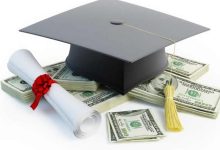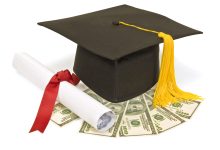High School Anatomy and Physiology Curriculum

Anatomy/physiology is the study of the human body’s structure and function. This course is designed to help students prepare for advanced biological studies, biomedical nursing, and other science-related occupations. Students learn about the primary body systems, how the body systems work together to provide homeostasis, body functions in healthy and pathological states, blood typing, muscle action, cranial nerve functioning, and bioethics through laboratory experiences and text-based exercises. This course fulfills one life science elective unit need for either the advanced academic diploma or the standard diploma.
This course is for students who have taken biology and want to continue their studies in biology. The structure and function of the body’s numerous cells, tissues, and interconnected systems will be studied by the student. The course is aimed to provide the foundation before moving on to different human systems.
Anatomy and physiology is a course that teaches students how to grasp the relationships between the human body’s parts and functions. Students will also study about the systems that keep the human body in a state of homeostasis. Laboratory exercises, projects, dissections, textbook material, models, diagrams, journal entries, and clinical investigations will all be part of this course.
Overview of the Course
Students must also complete an experiential learning task each term as part of the course. Experiential learning’s pedagogical roots stem from learning cycle theories, which argue that after students receive knowledge, they must apply it to some type of activity in order to retain it. The premise that student learning is enhanced by meaningful interactions with other students and, when possible, the public is central to experiential learning. Students in our anatomy and physiology class learn about the digestive system and nutrition utilizing Kolb’s learning cycle methodology, which includes both classic and atypical methods, such as reading Michael Pollan’s In Defense of Food: an Eater’s Manifesto. Students then collaborate in groups to create and develop instructional kiosk displays in order to engage the larger community in nutrition conversations and raise public awareness of good eating habits and obesity-related health issues. Kiosks have been set up at school athletic events, parent-teacher conferences, and even lunch periods in school cafeterias.
Related Post:How to become a Petroleum Engineer
Studying Techniques for Anatomy and Physiology
Before you go to class, read.
Attend class and take thorough notes.
For definitions, use rote memorization. Repeat them several times, and then have someone quiz you on them. After class, many people find it beneficial to rewrite the definitions.
You might even design or buy your own flashcards to assist you with this.
Make a point of saying them out loud. Hearing yourself say it can help it stick in your mind much more than simply repeating it silently. I once heard of a man who memorized the entire New Testament of the Bible by reading it aloud all the time.
Print diagrams and fill them in over and over. Study the image first, then print the diagram from the book using a scanner. You can draw your own scanner if you don’t have one. You’ll learn the bodily parts if you repeat the process.
Make use of what you’ve learnt in your everyday talks. Let’s imagine you went to the gym to work out, which is a terrific idea because it teaches you how to use the muscles. “I’m going to work out my biceps and pectoral muscles today,” you can tell your buddies. In regular discourse, try to use precise names for things.
Visualization: With hip extension, the obturator muscle laterally rotates the femur and abducts the femur with flexion. Obturator has a smooth surface.
Acrostics: A word or a sentence in which one word is spelled backwards. From the most numerous to the smallest, white blood cells are: Neutrophils, Lymphocytes, Monocytes, Eosinophils, and Basophils = Neutrophils, Lymphocytes, Monocytes, Eosinophils, and Basophils.
Abbreviations for the treatment of chest pain: Morphine, Oxygen, Nitroglycerin, and Aspirin (MONA) is an acronym for Morphine, Oxygen, Nitroglycerin, and Aspirin.
Practice Quizzes/Study Guides
Related Post:Mining Engineering Salary: University Requirements and Career Scope
Anatomy vs. Physiology: What’s the Difference?
Anatomy and physiology are two biology fields that are related to each other. Many college courses combine the two, making it simple to become perplexed about the distinction. Simply said, anatomy is the study of the structure and identity of body components, while physiology is the study of how these parts work and interact.
The field of morphology includes anatomy as a subset. Morphology refers to an organism’s internal and external appearance (such as shape, size, and pattern), as well as the shape and position of external and interior parts (e.g., bones and organs — anatomy).
An anatomist is a person who studies the human body from the inside out. Anatomists use dissection to learn about the interior anatomy of live and dead species.
Macroscopic anatomy, often known as gross anatomy, and microscopic anatomy are two fields of anatomy. Gross anatomy is concerned with the overall structure of the body as well as the identification and description of bodily parts visible to the naked eye. The focus of microscopic anatomy is on cellular structures, which can be seen via histology and various types of microscopy.
Because the shape and location of cells, tissues, and organs are linked to function, physiologists must understand anatomy. Anatomy is usually covered first in a combination course. Anatomy may be a prerequisite for physiology if the courses are separate. Physiology research necessitates the use of live tissue and specimens. While an anatomy lab focuses on dissection, a physiology lab may incorporate experiments to see how cells or systems react to changes. Physiology is divided into numerous branches. A physiologist might specialize in the excretory or reproductive systems, for instance.
STEM in High School Has Its Advantages
Problem-solving skills have been enhanced.
STEM classes typically rely on hands-on activities to teach a logical, systematic approach to problem-solving; as a result, the projects and interactive assignments pique students’ interest.
Students learn to evaluate a problem in a sequential manner in STEM courses, including identifying the fundamental problem, providing a hypothesis, testing theories, recording data, evaluating trends, and suggesting a long-term solution.
STEM courses can also be enjoyable, especially when students have time to “tinker.” Tinkering, according to some experts, can lead to “deep, personal learning about scientific concepts” as children learn to formulate questions, evaluate evidence, and develop valid replies.
Collaboration & communication improvements
When students enroll in high school STEM courses, they have numerous opportunity to improve communication skills, particularly through active listening and formal presentations.
Students in STEM classes can also work together on projects, which teaches patience, empathy, leadership, and inclusivity. They turn the classroom into a secure, lively, and participatory learning atmosphere while they develop long-lasting relationships.
Self-assurance
Change can be unpleasant for many teenagers, particularly when they are attempting to learn a new skill. STEM in high school, on the other hand, encourages kids to take small, calculated risks that help them develop confidence.
These same pupils, on the other hand, frequently learn the value of failure. Rather than equating challenges with failure, they discover that delays and problems can help people develop resilience and adaptability.
Students gain grit, tenacity, and courage when they embrace the learning process, which involves trial and error.
Preparation for college and work
Students are allowed to supplement their education with unique electives that stimulate fresh ideas once they learn that STEM in high school means STEM for everyone.
As a result, STEM professors may offer assignments that require self-paced work, thereby preparing pupils for independent activities in college and in the workplace.
The Best STEM High Schools in the United States
Stuyvesant High School is a public high school in New York City.
One of the most innovative and engaging computer science programs in the country is offered at Stuyvesant High School. The program’s purpose is to demonstrate the power of computer science as a problem-solving tool, so students learn about various programming languages and paradigms in their classes. Students will discover that there is no such thing as a “best” language or tool, but they will recognize the importance of identifying the greatest tool for the job at hand. Economically disadvantaged students make up 43% of their 3,000+ students, and 100% of them passed all state tests with competency (or above).
Wheeler High School is a public high school located in Wheeler
The STEM magnet program at Wheeler High School was the first in Georgia to receive STEM accreditation in 2012, as well as STEAM certification in 2017. They were also honored for their outreach in assisting other schools in developing STEM programs. Medical biotechnology, engineering/robotics, chemical engineering, and advanced chemistry are among the subjects covered by the STEM Center’s accelerated and advanced program. Senior research and internships with local business and institution partners round out the program. Students can enroll in twice as many math and science classes as they would in a standard curriculum. Honors Multivariable Calculus, Advanced Physics Robotics, Advanced DNA/Genetics Research, Essentials of Healthcare, and Architectural Drawing and Design are just a few examples of courses.
Regis High School is a public high school located in Regis
Regis High School takes pride in offering intensive, accelerated classes that allow students to self-direct their education through independent study, unscheduled time, and individualized instruction. They’re also upgrading education by requiring Computer Technology I and II for freshmen and sophomores. Seniors who want to improve their computer programming or dynamic website design skills can take elective courses. Regis sophomores who are proficient and interested in science might begin a science research project that will go through their senior year. It’s a lab-based course that requires students to collaborate with instructors and mentors outside of Regis. Although Regis does not offer AP classes, all of its courses are honors level, and many students register for and take AP exams. Discrete Mathematics, Advanced Physics, Java Programming, Anatomy & Physiology, and other elective STEM courses vary every year.
Craft Academy for Science and Mathematics Excellence
Craft Academy is a residential dual-credit secondary school for academically gifted Kentucky students. The Craft Academy’s academic rigor pushes students to achieve their full potential through project-based STEM+X courses and hands-on learning opportunities that emphasize innovation, design, and creativity, as well as civic and regional engagement. Craft Academy also hosts a GEMS (Girls in Engineering, Math, and Science) event at Morehead State University every year. GEMS is a one-day event that features workshops led by local STEM women. Craft’s STEM+X curriculum pushes students to investigate how STEM knowledge is influenced and impacted by technology, business and industry, entrepreneurship, innovation and design, and the medical area.
Related Post:Pediatric Anesthesiologist Salary
Phillips Exeter Academy is a private school in Exeter, Devon.
Phillips Exeter uses the Harkness collaborative learning paradigm, which stresses hands-on learning and teaches students that failure is OK and that they may bounce back fast. The school aims to foster a maker culture,which encourages pupils to explore new topics and projects that they are interested in. Exeter also provides students with a variety of multidisciplinary courses, groups, and events to help them prepare for a lifetime of innovation. The school, for example, held a 48-hour Maker Fest to inspire students to employ design thinking ideas to develop real-world goods. Algorithms and Public Policy, Bioethics, Data-Driven & Interactive Web Development, Advanced Ceramics + Chemistry: C-Squared, Foundations of Abstract Mathematics, Multivariable Calculus, Animal Behavior, and Molecular Genetics are just a few of the STEM courses available at Phillips Exeter.
High School Henry M. Gunn
Gunn High School focuses on providing students with the courses, resources, and faculty they need to thrive academically while also developing holistically. They are committed to each student’s social, emotional, physical, and intellectual growth. In May of this year, 900 students took a total of 2,356 AP exams. 93.2 percent of pupils received a 3 or higher, while 44.2 percent received a 5. STEM alternatives such as robotics, biotechnology, and computer science are among the elective courses available.
DeBakey Health Professions High School
The DeBakey High School for Health Professions (DHSHP) in Houston was founded in 1972 as a joint venture of the Houston Independent School District (HISD) and Baylor College of Medicine (BCM). It was created to give students more opportunities to pursue careers in medicine, science, and the health professions. During the 2016-2017 academic year, a new $65 million facility was completed. The five-story, state-of-the-art facility will house 1,000 students and provide a direct link to the world-renowned Texas Medical Center’s abundance of educational, clinical, and research facilities. Students attend health science classes throughout their four years, with practicums in dental science, patient care science, global health, biomedical engineering, and other topics.









